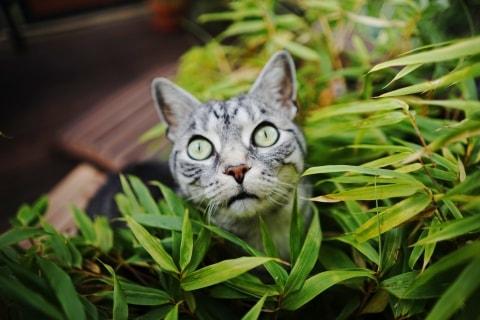Many cats and dogs like to nibble on your house plants, particularly indoor cats in search of some fresh greenery. However, some plants are poisonous and can make your pet seriously ill. So, which plants are toxic for your cat or dog, and what are the safe alternatives?
Cats or dogs that have eaten a poisonous plant can become seriously ill and exhibit symptoms such as: vomiting, diarrhoea, drooling and difficulty breathing. If you notice any of these symptoms then take your pet straight to the vet. -> When should I take my pet to the vet?
Common poisonous plants:
- Aloe Vera
- Anemone
- Azalea
- Bulb flowers, such as Hyacinth, Narcissus and Amaryllis
- Chrysanthemum
- Dieffenbachia
- Dracaena
- Ficus
- Swiss cheese plants
- Lilies
- Christmas plants (Poinsettia, Christmas rose, mistletoe, holly)
- Philodendron
Avoid these plants and/or put them in a safe place that’s out of your pet’s reach. Are you a pet sitter about to home board a dog or cat? Then check your house for poisonous plants and remove any risky plants prior to the arrival of your furry visitors.
Whilst cats tend to intuitively avoid poisonous plants, you must never assume this. Young pets are at an additional risk of poisoning. Indeed, kittens enjoy exploring their environment via their taste buds and are unable to make the distinction between toxic and non-toxic. Dogs or other pets that are curious or bored also run the risk of munching on toxic plants.
The list of poisonous plants is long. Which is why it’s often easier to choose a plant that’s categorically non-toxic for your dog or cat.
Common safe plants:
- Areca palm, dwarf palm. In fact, palms are invariably a safe option!
- Bamboo
- Bromeliad (flower)
- Haworthia (a non-toxic succulent plant)
- Gerberas
- Marigold
- Grass lily
- Ponytail palm
- Orchid
- Fern
- Herbs in your kitchen such as parsley and mint. Some cats love these!

Cats love plants
Of course, houseplants are not there to be eaten. Yet many cats need to nibble on something green. Indoor cats particularly require your help. So, indulge your indoor cat with a pot of fresh cat grass. Cat grass is packed with folic acid, which is extremely beneficial for your little tiger and helps them to regurgitate hairballs. Most cats love it. Note: cats that enjoy eating cat grass may also have a go at your non-toxic houseplants. Incidentally, they’re unable to digest the actual leaves: they instead 'gnaw' on them to extract the nutrients and then expel the fibre via vomiting.
Did you know that many dogs also love fresh (cat) grass? We don’t know why exactly; we suspect that they just like the taste of it. So, treat your pampered pooch to a good old nibble on the green stuff every now and then!
Cats and dogs can determine for themselves how much grass to eat, so a recommended dosage is not required. Simply make it available and allow your pet to help themselves as and when desired. However, some cats can overdo things, and will continue to eat (and vomit), which isn't very fun for anyone! If this sounds like your little furry friend, then it’s advisable to place the pot of grass out of reach from time to time. You can buy cat grass at your pet store, plant store or you can DIY and grow your own cat grass.






